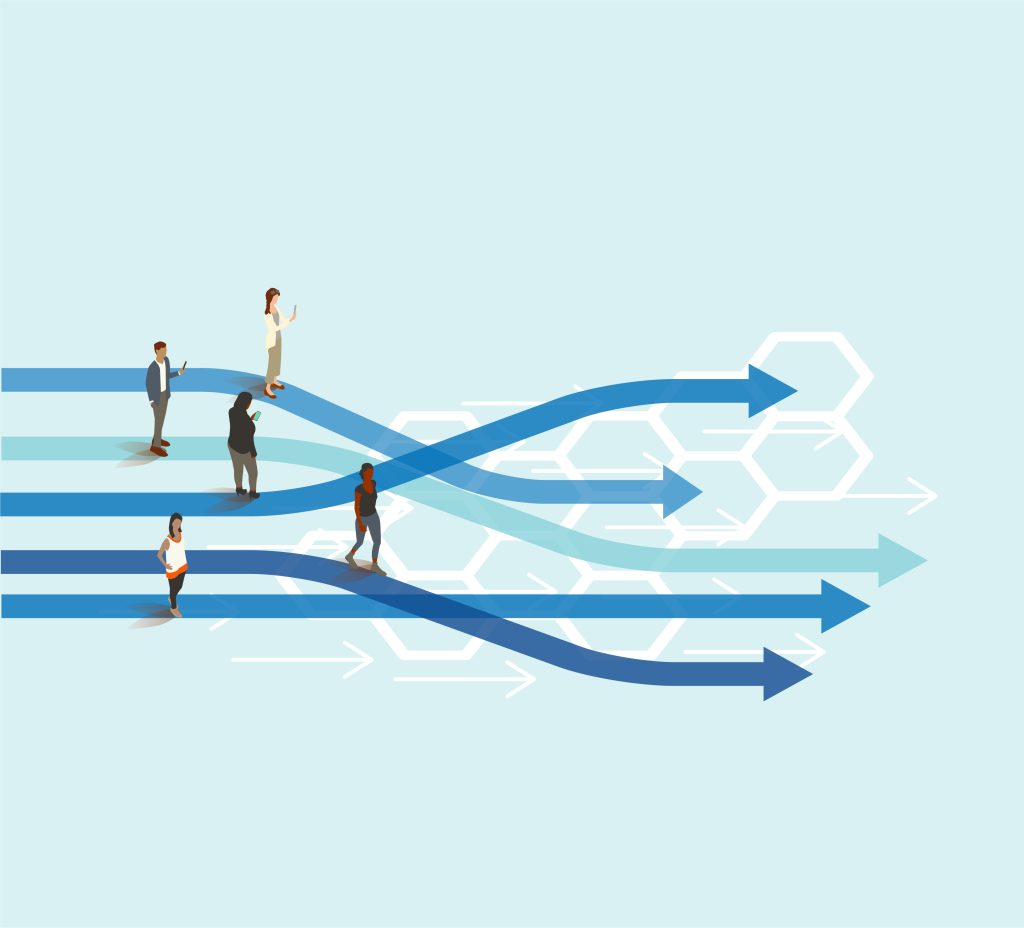The Essence of Change Management
Wednesday, July 17, 2024 - Joe Kiedinger

Change can be difficult. You don’t need to read a book to know that – this is a universal experience. Some people love to change and try new things, but most people are naturally change-averse. Doing things “the way we have always done them” is easy. Even when “the way we have always done things” is suboptimal or missing something, most people prefer to do what they are used to.
Naturally, change management is often thought of as one of the most daunting skills to learn for a leader in the workplace. Not only do you have to make your own adaptations and adjustments to account for the ongoing changes, but you are also responsible for facilitating the change for each individual member of your team and ensuring that they have the clarity and materials they need to proceed.
The reality of change management
When it comes to change, everyone is going to react differently depending on who they are and what the change in question is. For example, if the change is that your company is distributing the latest and greatest iPhones to your team to replace a far outdated mobile device, the likelihood is that the younger people will be jumping for joy with excitement. Meanwhile, the older and more established members of your team, who have worked with the same device for years and might be far more comfortable on it than they are with an iPhone 15, will be reluctant and might express frustration at something they perceive as unnecessary.
Or, let’s say that the change in question is going to change a process that some people on your team are extremely competent and comfortable with, but others loathe. Obviously, those that disliked the original process will love the change, and those that liked it will be hesitant, perceiving a potential threat to their ability to perform.
The point is that with any change, there are going to be those that are ready for it, and those that are unready for it. Change is only hard for the unready. Read that again. Change is only hard for the unready. Your objective as a leader is to identify who is unready and come up with a strategy to bring them to a place where they are ready.
The ADKAR model
Given how important change management is to leading a successful organization, some people have made the topic their life’s work, developing standard models and processes for people to follow to do it properly. One of those change management models, and the one you’re most likely to be familiar with, is the ADKAR model. ADKAR stands for:
- Awareness: Awareness of the change
- Desire: Desire to go through with the change
- Knowledge: Knowing how to create and sustain the change
- Ability: Having the skills and behaviors needed to execute the change
- Reinforcement: Ensuring the change sticks
Although it might seem easy from the concise description here, it’s obviously not as easy as 1-2-3. Each of these steps is a process of its own with difficulties and considerations to take into account. Usually, one of the hardest stages to get past in this model is the “desire” stage. As we mentioned before, people can resist change for any reason, and there will always be a group of people that aren’t entirely ready for a change.
How to help the unready become ready
Although those that are unready may use logical terms to voice their resistance to a change, the reality is that they are speaking with their emotions as well. Emotions almost always come into play in this regard. Think about the people in the examples we brought up.
Someone with the “Organized” Dignify Trait might not value the newest iPhone, even if it’s objectively better, because it messes with how they’ve organized their materials. Or, for another example, someone with the “Competent” Dignify Trait might not appreciate a process change because it changes how they do things. People who are resisting change will often communicate logically, but they often perceive that their dignity is being dinged.
In order to bring the unready to ready and build the desire to change, you need to understand who they are and present the change on the basis of their dignity. You need to show them how the change will support their dignity in the long term, even if it may seem like the opposite in the short term.
Additionally, remember that with any change, there will also be a group of people who are fully prepared and ready to go through with it! Do you have someone with, for example, the “Born Leader” Trait, or the “Inspirational” Trait? Tap into their dignity and give them an opportunity to help their peers ease into the new reality. Let them lead, inspire, and drive the change from the ground up.
Remember – change is only hard for those that aren’t ready for it. As a leader, your job is to identify those that are unready, and implement a strategy to build desire and get them ready for it. You need to understand exactly why they are resistant to the change and present it in a light that supports their dignity. With a better understanding of your people comes a better capacity to change. Tap into the resources available to you like Dignify and other team members to execute and sustain change within your organization.
JOE KIEDINGER
ACTION PLAN: Before undertaking a major change, assess who might fall into the “ready” and “unready” camp, and come up with a plan to utilize the resources available to you to execute the change smoothly, taking everyone into proper consideration.

